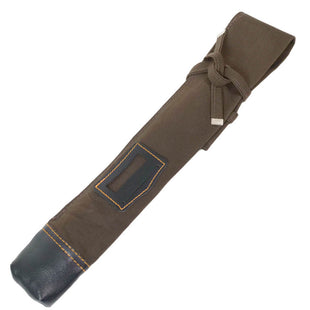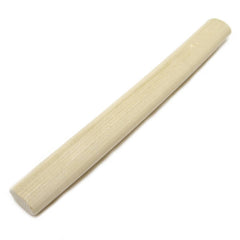Tanto Iaito Minosaka Higo Koshirae - Custom Made
Order today and we will ship before
Order today and we will ship before
seller
Price may increase depending on customizations
Iaito Customizations
All orders are final. No modification or cancellation will be accepted once an order is placed. Short production delays do not give right to cancellation.
The production time is 3 to 6 weeks for Minosaka Iaito depending on selected options. We will contact you within 3 business days after you passed your order if the completion date estimated by the workshop is later than the shipping date indicated at checkout.
To ensure that you haven't missed anything, all options must be selected, even when you want a standard element.
Even if an option is visible on the product's pictures, it is not available for this specific product if it is not visible in the selection. All available options are displayed in that selection and we will not accept any request for options not listed below.
We strongly recommend reading in details our guide "How to Choose your Iaito" and taking time to make sure that each option corresponds to your wish before placing an order for a custom Iaito.
Habaki & Seppa
The habaki is the piece of metal circling the base of the blade. It has two main purposes: locking the tsuba in its place and holding the sword into the Saya.
Unlike the Shinken Habaki which can be very expensive, the Iaito Habaki are standardized and gently forced into place. This means removing or changing the Habaki on an Iaito blade is not recommended.
Habaki are made of brass and are available in three different designs: Muji, Shonai, and Yujo, and in 3 different finishes: black (oxidized), gold plated, and silver plated. Please note that due to the oxidation process, it is not possible to blacken the Shonai design.
The Seppa are washers used in front and behind the tsuba to tighten the fittings, made of copper or brass. They are compulsory to keep the Tsuba safely in place.
They are available in brass, copper, black (oxidized), gold-plated brass, and silver-plated brass.
Tsukaito
The Tsukaito has two main goals: it serves as a grip and it holds the Tsuka tightly. A tightly wrapped Tsuka is extremely important for security.
Cotton allows better absorption of the sweat but it is less durable than silk and leather. It is the standard option for most Iaito.
Silk feels a little harder and is sometimes not recommended for beginners. However, it has a significantly longer lifespan.
Sweat is not really absorbed by Leather but this latter offers an excellent grip and it is the most durable material. Leather is available in standard and suede version (napped finish). The latter has a slightly better grip but it is slightly less durable.
Please note that those materials are made traditionally - they are not mass-produced. Therefore, colors can slightly vary depending on the batch.
In general, the Tsukaito is of the same color as the Sageo to keep the fitting harmonious, but this is not compulsory; you can select two different colors if you like.
Tsuka Same & Maki
The Samekawa or "shark skin" is the part under the Tsukaito. Shark hunting is no longer practiced nowadays; therefore, despite the name “samekawa”, it’s actually stingray skin which is used. Its main goal is to keep the Tsukaito into place and to reinforce the Tsuka structure. The Same is sanded and polished in order to produce a durable superior-quality type of leather.
On live blades (Shinken) mounts, the Same is a "maki same", which wraps the Tsuka wood. However, for cost reasons, the Iaito Tsuka is made with two rectangular pieces of Same inlaid in the Tsuka. This is called Tanzaku-same.
The "Makisame" is a large piece of stingray skin which wraps the Tsuka. It makes the Tsuka slightly bigger and it significantly strengthens it, which improves its grip and its lifetime. The Makisame is made the same way Shinken Same are made.
Please note that we also offer a plastic Same option for customers concerned about animal protection. The plastic Same is only available as a "Tanzaku Same only" (Makisame is not possible).
The Tsukamaki is the way the tsukaito (cord) is wrapped around the Tsuka. The Hinerimaki is the standard wrapping, known by all practitioners.
The Hiramaki is a very specific wrapping that enables to make the centre of the Tsuka flat. This is a popular wrapping in Iai schools which use an important number of single-handed techniques/moves.
In order to hold the Menuki correctly, the cord goes over the Menuki on each side (which may significantly hide the Menuki if it’s a small one). Please note that we do not recommend this wrap for intensive practice as it is less durable than the standard Hinerimaki wrap.
Finally, the Katatemaki style is more designed for decoration than practice because it doesn't hold as well as the other wrappings. It is however proved that it was the wrapping used by the famous Samurai Akechi Mitsuhide. Given that the side parts of the Tsuka are left naked, this wrapping is only available with the Makisame option.
In option, we offer to put 2 Mekugi (peg) in the Tsuka. This may reassure you as 2 Mekugi make you feel safer. However, from the craftsmen's point of view, since Iaito are very rarely taken apart, this option is unnecessary. This option is not available for the Hiramaki.
Saya Lacquer
-
-
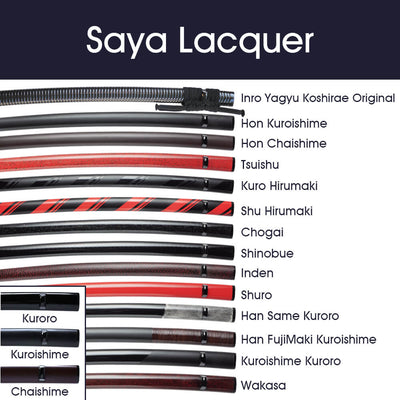 Minosaka Saya
Minosaka Saya -
![Minosaka Saya Kuroro [SY101]](//www.seidoshop.com/cdn/shop/products/Minosaka-Saya-Kuroro_ccbd6f6e-f4ca-4d90-8886-faf7c98537a9_400x400.progressive.jpg?v=1661386806) Minosaka Saya Kuroro [SY101]
Minosaka Saya Kuroro [SY101] -
![Minosaka Saya Kuroishime [SY102]](//www.seidoshop.com/cdn/shop/products/Minosaka-Saya-Kuroishime_ef0e8c41-9404-4bf9-9922-daadc9bc5e74_400x400.progressive.jpg?v=1661386806) Minosaka Saya Kuroishime [SY102]
Minosaka Saya Kuroishime [SY102] -
![Minosaka Saya Chaishime [SY103]](//www.seidoshop.com/cdn/shop/products/Minosaka-Saya-Chaishime_1ab5fb81-c5b6-446e-a06b-d92c0db3c59e_400x400.progressive.jpg?v=1661386806) Minosaka Saya Chaishime [SY103]
Minosaka Saya Chaishime [SY103] -
![Minosaka Saya Hon Kuroishime [SY200]](//www.seidoshop.com/cdn/shop/products/Minosaka-Hon-Kuroishime_400x400.progressive.jpg?v=1661386806) Minosaka Saya Hon Kuroishime [SY200]
Minosaka Saya Hon Kuroishime [SY200] -
![Minosaka Saya Hon Chaishime [SY201]](//www.seidoshop.com/cdn/shop/products/Minosaka-Saya-Hon-Chaishime_400x400.progressive.jpg?v=1661386806) Minosaka Saya Hon Chaishime [SY201]
Minosaka Saya Hon Chaishime [SY201] -
![Minosaka Saya Tsuishu [SY202]](//www.seidoshop.com/cdn/shop/products/Minosaka_Saya-Tsuishu_400x400.progressive.jpg?v=1661386806) Minosaka Saya Tsuishu [SY202]
Minosaka Saya Tsuishu [SY202] -
![Minosaka Saya Kuro Hirumaki [SY203]](//www.seidoshop.com/cdn/shop/products/Minosaka-Saya-Kuro-Hirumaki_400x400.progressive.jpg?v=1661386806) Minosaka Saya Kuro Hirumaki [SY203]
Minosaka Saya Kuro Hirumaki [SY203] -
![Shu Hirumaki [SY204]](//www.seidoshop.com/cdn/shop/products/Minosaka-Saya-Shu-Hirumaki_400x400.progressive.jpg?v=1661386806) Shu Hirumaki [SY204]
Shu Hirumaki [SY204] -
![Minosaka Saya Chogai [SY205]](//www.seidoshop.com/cdn/shop/products/Minosaka-Saya-Chogai_400x400.progressive.jpg?v=1661386806) Minosaka Saya Chogai [SY205]
Minosaka Saya Chogai [SY205] -
![Minosaka Saya Shinobue [SY206]](//www.seidoshop.com/cdn/shop/products/Minosaka-Saya-Shinobue_400x400.progressive.jpg?v=1661386806) Minosaka Saya Shinobue [SY206]
Minosaka Saya Shinobue [SY206] -
![Minosaka Saya Inden [SY207]](//www.seidoshop.com/cdn/shop/products/Minosaka-Saya-Inden_400x400.progressive.jpg?v=1661386806) Minosaka Saya Inden [SY207]
Minosaka Saya Inden [SY207] -
![Minosaka Saya Shuro [SY208]](//www.seidoshop.com/cdn/shop/products/Minosaka-Saya-Shuro_400x400.progressive.jpg?v=1661386806) Minosaka Saya Shuro [SY208]
Minosaka Saya Shuro [SY208] -
![Minosaka Saya Kuroishime / Kuroro [SY211]](//www.seidoshop.com/cdn/shop/products/Minosaka_Saya-kuroishime-kuroro_400x400.progressive.jpg?v=1661386806) Minosaka Saya Kuroishime / Kuroro [SY211]
Minosaka Saya Kuroishime / Kuroro [SY211] -
![Minosaka Saya Wakasa [SY212]](//www.seidoshop.com/cdn/shop/products/Minosaka_Saya-Wakasa_400x400.progressive.jpg?v=1661386806) Minosaka Saya Wakasa [SY212]
Minosaka Saya Wakasa [SY212] -
![[MS] Saya Lacquer](//www.seidoshop.com/cdn/shop/products/Saya-ishimenuri-comparison_24bc56e0-049e-47fb-8998-cc6f0cee8332_400x400.progressive.jpg?v=1661386806)
The Saya is made of two pieces of Japanese magnolia wood that are glued together. It is reinforced by the Sayajiri (end of the Saya), the Koiguchi, and of course, the lacquer. Unlike Shinken, Saya lacquers for Iaito are not made from traditional Urushi lacquer but from modern urethane lacquer, due to financial reasons.
Lacquers with a name ending in "ro" have a glossy finish, with a perfectly smooth surface. Lacquers with a name ending in "ishime" have a grainy finish, with a rough touch. The "ro" finish being smoother, the Saya is easier to slip in the Obi (belt).
If you plan on moving a lot with your Iaito, we recommend a "ishime" finish, which has a better resistance to scratches.
Sageo
-
![[MS] Sageo](//www.seidoshop.com/cdn/shop/files/Sageo-minosaka-main-03_400x400.progressive.jpg?v=1690342753)
-
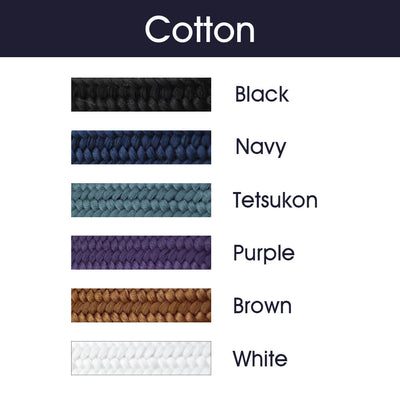 Cotton Sageo - Color Sample
Cotton Sageo - Color Sample -
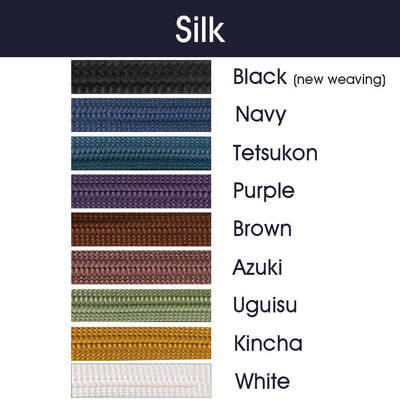 Silk Sageo - Color Sample
Silk Sageo - Color Sample -
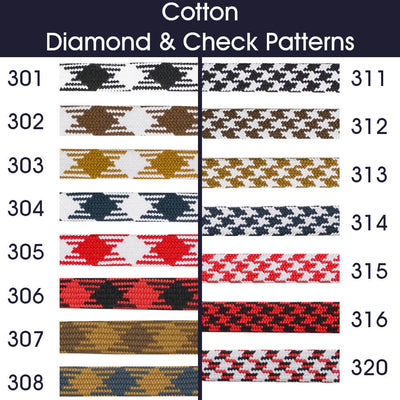 Check Pattern Cotton Sageo - Color Sample
Check Pattern Cotton Sageo - Color Sample -
![Cotton - Black [SG101]](//www.seidoshop.com/cdn/shop/products/Cotton_Sageo_Shigeuchi_black_400x400.progressive.jpg?v=1690342753) Cotton - Black [SG101]
Cotton - Black [SG101] -
![Cotton - Navy [SG102]](//www.seidoshop.com/cdn/shop/products/Cotton_Sageo_Shigeuchi_navy_400x400.progressive.jpg?v=1690342753) Cotton - Navy [SG102]
Cotton - Navy [SG102] -
![Cotton - Tetsukon (Blue/Grey) [SG103]](//www.seidoshop.com/cdn/shop/products/Cotton_Sageo_Shigeuchi_tetsukon_400x400.progressive.jpg?v=1690342753) Cotton - Tetsukon (Blue/Grey) [SG103]
Cotton - Tetsukon (Blue/Grey) [SG103] -
![Cotton - Purple [SG104]](//www.seidoshop.com/cdn/shop/products/Cotton_Sageo_Shigeuchi_purple_400x400.progressive.jpg?v=1690342753) Cotton - Purple [SG104]
Cotton - Purple [SG104] -
![Cotton - Brown [SG105]](//www.seidoshop.com/cdn/shop/products/Cotton_Sageo_Shigeuchi_brown_400x400.progressive.jpg?v=1690342753) Cotton - Brown [SG105]
Cotton - Brown [SG105] -
![Cotton - White [SG106]](//www.seidoshop.com/cdn/shop/products/Cotton_Sageo_Shigeuchi_white_400x400.progressive.jpg?v=1690342753) Cotton - White [SG106]
Cotton - White [SG106] -
![Silk Sageo - Black [SG201]](//www.seidoshop.com/cdn/shop/files/sageo_silk_shigeuchi_minosaka_black_400x400.progressive.jpg?v=1690342753) Silk Sageo - Black [SG201]
Silk Sageo - Black [SG201] -
![Silk Sageo - Navy [SG202]](//www.seidoshop.com/cdn/shop/products/sageo_silk_kakucho_minosaka_navy_400x400.progressive.jpg?v=1690342753) Silk Sageo - Navy [SG202]
Silk Sageo - Navy [SG202] -
![Silk Sageo - Tetsukon (Blue/Grey) [SG203]](//www.seidoshop.com/cdn/shop/products/sageo_silk_kakucho_minosaka_tetsukon_400x400.progressive.jpg?v=1690342753) Silk Sageo - Tetsukon (Blue/Grey) [SG203]
Silk Sageo - Tetsukon (Blue/Grey) [SG203] -
![Silk Sageo - Purple [SG204]](//www.seidoshop.com/cdn/shop/products/sageo_silk_kakucho_minosaka_purple_400x400.progressive.jpg?v=1690342753) Silk Sageo - Purple [SG204]
Silk Sageo - Purple [SG204] -
![Silk Sageo - Brown [SG205]](//www.seidoshop.com/cdn/shop/products/sageo_silk_kakucho_minosaka_brown_96303409-5fcd-40a8-ad2f-9a642bb4d4c6_400x400.progressive.jpg?v=1690342753) Silk Sageo - Brown [SG205]
Silk Sageo - Brown [SG205] -
![Silk Sageo - Azuki (Wine) [SG206]](//www.seidoshop.com/cdn/shop/products/sageo_silk_kakucho_minosaka_azuki_400x400.progressive.jpg?v=1690342753) Silk Sageo - Azuki (Wine) [SG206]
Silk Sageo - Azuki (Wine) [SG206] -
![Silk Sageo - Uguisu (Green) [SG207]](//www.seidoshop.com/cdn/shop/products/sageo_silk_kakucho_minosaka_uguisu_400x400.progressive.jpg?v=1690342753) Silk Sageo - Uguisu (Green) [SG207]
Silk Sageo - Uguisu (Green) [SG207] -
![Silk Sageo - Kincha (Gold) [SG208]](//www.seidoshop.com/cdn/shop/products/sageo_silk_kakucho_minosaka_kincha_400x400.progressive.jpg?v=1690342753) Silk Sageo - Kincha (Gold) [SG208]
Silk Sageo - Kincha (Gold) [SG208] -
![Silk Sageo - White [SG209]](//www.seidoshop.com/cdn/shop/products/sageo_silk_kakucho_minosaka_white_400x400.progressive.jpg?v=1690342753) Silk Sageo - White [SG209]
Silk Sageo - White [SG209] -
![Cotton - Pattern 301: Black & White Diamond [SG301]](//www.seidoshop.com/cdn/shop/products/sageo-coton-check-pattern-minosaka-301_400x400.progressive.jpg?v=1690342753) Cotton - Pattern 301: Black & White Diamond [SG301]
Cotton - Pattern 301: Black & White Diamond [SG301] -
![Cotton - Pattern 302: Brown & White Diamond [SG302]](//www.seidoshop.com/cdn/shop/products/sageo-coton-check-pattern-minosaka-302_400x400.progressive.jpg?v=1690342753) Cotton - Pattern 302: Brown & White Diamond [SG302]
Cotton - Pattern 302: Brown & White Diamond [SG302] -
![Cotton - Pattern 303: Gold & White Diamond [SG303]](//www.seidoshop.com/cdn/shop/products/sageo-coton-check-pattern-minosaka-303_400x400.progressive.jpg?v=1690342753) Cotton - Pattern 303: Gold & White Diamond [SG303]
Cotton - Pattern 303: Gold & White Diamond [SG303] -
![Cotton - Pattern 304: Navy & White Diamond [SG304]](//www.seidoshop.com/cdn/shop/products/sageo-coton-check-pattern-minosaka-304_400x400.progressive.jpg?v=1690342753) Cotton - Pattern 304: Navy & White Diamond [SG304]
Cotton - Pattern 304: Navy & White Diamond [SG304] -
![Cotton - Pattern 305: Red & White Diamond [SG305]](//www.seidoshop.com/cdn/shop/products/sageo-coton-check-pattern-minosaka-305_400x400.progressive.jpg?v=1690342753) Cotton - Pattern 305: Red & White Diamond [SG305]
Cotton - Pattern 305: Red & White Diamond [SG305] -
![Cotton - Pattern 306: Red & Black Diamond [SG306]](//www.seidoshop.com/cdn/shop/products/sageo-coton-check-pattern-minosaka-306_400x400.progressive.jpg?v=1690342753) Cotton - Pattern 306: Red & Black Diamond [SG306]
Cotton - Pattern 306: Red & Black Diamond [SG306] -
![Cotton - Pattern 307: Brown & Gold Diamond [SG307]](//www.seidoshop.com/cdn/shop/products/sageo-coton-check-pattern-minosaka-307_400x400.progressive.jpg?v=1690342753) Cotton - Pattern 307: Brown & Gold Diamond [SG307]
Cotton - Pattern 307: Brown & Gold Diamond [SG307] -
![Cotton - Pattern 308: Navy & Gold Diamond [SG308]](//www.seidoshop.com/cdn/shop/products/sageo-coton-check-pattern-minosaka-308_400x400.progressive.jpg?v=1690342753) Cotton - Pattern 308: Navy & Gold Diamond [SG308]
Cotton - Pattern 308: Navy & Gold Diamond [SG308] -
![Cotton - Pattern 311: Black & White Check [SG311]](//www.seidoshop.com/cdn/shop/products/sageo-coton-check-pattern-minosaka-311_400x400.progressive.jpg?v=1690342753) Cotton - Pattern 311: Black & White Check [SG311]
Cotton - Pattern 311: Black & White Check [SG311] -
![Cotton - Pattern 312: Brown & White Check [SG312]](//www.seidoshop.com/cdn/shop/products/sageo-coton-check-pattern-minosaka-312_400x400.progressive.jpg?v=1690342753) Cotton - Pattern 312: Brown & White Check [SG312]
Cotton - Pattern 312: Brown & White Check [SG312] -
![Cotton - Pattern 313: Gold & White Check [SG313]](//www.seidoshop.com/cdn/shop/products/sageo-coton-check-pattern-minosaka-313_400x400.progressive.jpg?v=1690342753) Cotton - Pattern 313: Gold & White Check [SG313]
Cotton - Pattern 313: Gold & White Check [SG313] -
![Cotton - Pattern 314: Navy & White Check [SG314]](//www.seidoshop.com/cdn/shop/products/sageo-coton-check-pattern-minosaka-314_400x400.progressive.jpg?v=1690342753) Cotton - Pattern 314: Navy & White Check [SG314]
Cotton - Pattern 314: Navy & White Check [SG314] -
![Cotton - Pattern 315: Red & White Check [SG315]](//www.seidoshop.com/cdn/shop/products/sageo-coton-check-pattern-minosaka-315_400x400.progressive.jpg?v=1690342753) Cotton - Pattern 315: Red & White Check [SG315]
Cotton - Pattern 315: Red & White Check [SG315] -
![Cotton - Pattern 316: Black & Red Check [SG316]](//www.seidoshop.com/cdn/shop/products/sageo-coton-check-pattern-minosaka-316_400x400.progressive.jpg?v=1690342753) Cotton - Pattern 316: Black & Red Check [SG316]
Cotton - Pattern 316: Black & Red Check [SG316] -
![Cotton - Pattern 320: Red, White & Black Check [SG320]](//www.seidoshop.com/cdn/shop/products/sageo-coton-check-pattern-minosaka-320_400x400.progressive.jpg?v=1690342753) Cotton - Pattern 320: Red, White & Black Check [SG320]
Cotton - Pattern 320: Red, White & Black Check [SG320]
The Sageo, the twisted lace which is provided on the Saya Kurikata, has two main purposes: it is tied to the Obi (belt) to prevent the Saya from falling when the sword is carried by its owner, and it has an ornamental purpose when the sword is displayed. Some Koryu also teach how to use the Sageo as a weapon or to tie an opponent's hands (Hojujutsu). It is also said that the lace serves as a spiritual bond between the samurai and the sword.
Iaito Sageo are usually made of lower quality synthetic silk (not offered here) cotton or silk.
Cotton Sageo are available in plain colors as well as in check patterns.
Silk Sageo are only available in plain colors. Silk Sageo are woven more tightly than cotton but are also thinner, which gives them a harder touch than the cotton ones.
Please note that for the Black Silk Sageo, the former weaving (Kakucho) has been replaced by a new one (Shigeuchi), giving the sageo a thicker look.
The colors may vary slightly depending on batches due to the traditional dyeing techniques.
The standard Sageo length is 210 cm. Only the silk Sageo is available in 240 cm.
All Iaito are delivered with the Sageo tied with a knot called "Ronin" knot, the way most craftsmen do. It is the most common knot for decorative purposes.
Recommended Accessories
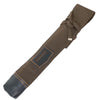
Cotton Cover for Tanto
Made in Japan
Material: Cotton
Length: 55 cm | Weight: 35 g
Available color: brown only
Solid cotton cover for tanto transport and protection. This model can accommodate a standard 30 cm tanto but also longer models such as the 40 cm model and the aluminum alloy model from Minosaka Iaito workshop. Synthetic leather reinforcements are fitted at the bottom of the cover. With a tie (also made from the same cotton fabric) sewn onto the upper part, the cover can easily be tied up. The metal finish of the strap give it a classy touch.
Customer Reviews
Product & Services
Accessories
Order today and we will ship before
Order today and we will ship before





























![[MS] Tsukaito](http://www.seidoshop.com/cdn/shop/products/minosaka-tsukaito_coton_recap_400x400.progressive.jpg?v=1630300739)
![[MS] Tsukaito](http://www.seidoshop.com/cdn/shop/products/tsukaito-silk-minosaka-recap_6cf5ba69-fd11-4de1-87f0-9c3f79bc0ecf_400x400.progressive.jpg?v=1633069048)
![[MS] Tsukaito](http://www.seidoshop.com/cdn/shop/products/tsukaito-leather-minosaka-recap_400x400.progressive.jpg?v=1661493051)
![Cotton - Black [TI101]](http://www.seidoshop.com/cdn/shop/products/tsukaito-coton-black_438567b4-4870-4ce4-b7e6-427c3598c09b_400x400.progressive.jpg?v=1661493051)
![Cotton - Navy [TI102]](http://www.seidoshop.com/cdn/shop/products/tsukaito-coton-navy_b73524b3-7f2c-4f17-83ca-1aa7689f74e6_400x400.progressive.jpg?v=1661493051)
![Cotton - Tetsukon (Blue/Grey) [TI103]](http://www.seidoshop.com/cdn/shop/products/tsukaito-coton-tetsukon_90d2d7a2-5819-4887-8561-b87c79c3ef2b_400x400.progressive.jpg?v=1661493051)
![Cotton - Purple [TI104]](http://www.seidoshop.com/cdn/shop/products/tsukaito-coton-purple_830bb88a-9b9e-4131-adba-bd029e0240d6_400x400.progressive.jpg?v=1661493051)
![Cotton - Brown [TI106]](http://www.seidoshop.com/cdn/shop/products/tsukaito-coton-brown_750ec84d-5e92-4f1d-8fd1-524841803291_400x400.progressive.jpg?v=1661493051)
![Cotton - White [TI109]](http://www.seidoshop.com/cdn/shop/products/tsukaito-coton-white_108e1d25-2e4b-4d51-8e5a-4c813eb61d66_400x400.progressive.jpg?v=1661493051)
![[MS] Tsukaito](http://www.seidoshop.com/cdn/shop/products/tsukaito-silk-minosaka-black_bbbe745a-f1bd-4a08-b986-60a067e0d115_400x400.progressive.jpg?v=1661493051)
![[MS] Tsukaito](http://www.seidoshop.com/cdn/shop/products/tsukaito-silk-minosaka-navy_81f394b8-8e8e-49b8-b81a-6393e961c69a_400x400.progressive.jpg?v=1661493051)
![[MS] Tsukaito](http://www.seidoshop.com/cdn/shop/products/tsukaito-silk-minosaka-tetsukon_36faa53e-682b-4da1-a03e-c3029c8d98e5_400x400.progressive.jpg?v=1661493051)
![[MS] Tsukaito](http://www.seidoshop.com/cdn/shop/products/tsukaito-silk-minosaka-purple_9ce6ba8f-b12b-401e-a408-444d564ce967_400x400.progressive.jpg?v=1661493051)
![[MS] Tsukaito](http://www.seidoshop.com/cdn/shop/products/tsukaito-silk-minosaka-brown_8bde6c5a-00b2-46d3-9f2d-1b79cf24bfb8_400x400.progressive.jpg?v=1661493051)
![[MS] Tsukaito](http://www.seidoshop.com/cdn/shop/products/tsukaito-silk-minosaka-uguisu_6e386901-39cc-4f1f-87d8-158170f1ebee_400x400.progressive.jpg?v=1661493051)
![[MS] Tsukaito](http://www.seidoshop.com/cdn/shop/products/tsukaito-silk-minosaka-azuki_0e45916c-e516-460f-a6e2-7e974bec99fd_400x400.progressive.jpg?v=1661493051)
![[MS] Tsukaito](http://www.seidoshop.com/cdn/shop/products/tsukaito-silk-minosaka-kincha_31587449-13c8-4d83-ac0e-4de9d123b283_400x400.progressive.jpg?v=1661493051)
![[MS] Tsukaito](http://www.seidoshop.com/cdn/shop/products/tsukaito-silk-minosaka-white_c97e0ffe-9fa2-4fe8-a58b-ee4e16681771_400x400.progressive.jpg?v=1661493051)
![Leather - Black [TI301]](http://www.seidoshop.com/cdn/shop/products/tsukaito-leather-black_400x400.progressive.jpg?v=1661493051)
![Leather - Brown [TI302]](http://www.seidoshop.com/cdn/shop/products/tsukaito-leather-brown_400x400.progressive.jpg?v=1661493051)
![Leather - Black Suede [TI401]](http://www.seidoshop.com/cdn/shop/products/tsukaito-leather-black-suede_400x400.progressive.jpg?v=1661493051)
![Leather - Brown Suede [TI404]](http://www.seidoshop.com/cdn/shop/products/tsukaito-leather-brown-suede_fb67dd8f-4132-41dc-a212-637b8d431179_400x400.progressive.jpg?v=1661493051)
![[MS] Tsukaito [MS] Tsukaito](http://www.seidoshop.com/cdn/shop/products/minosaka-tsukaito_coton_recap_90x90_crop_center.progressive.jpg?v=1630300739)
![[MS] Tsukaito [MS] Tsukaito](http://www.seidoshop.com/cdn/shop/products/tsukaito-silk-minosaka-recap_6cf5ba69-fd11-4de1-87f0-9c3f79bc0ecf_90x90_crop_center.progressive.jpg?v=1633069048)
![[MS] Tsukaito [MS] Tsukaito](http://www.seidoshop.com/cdn/shop/products/tsukaito-leather-minosaka-recap_90x90_crop_center.progressive.jpg?v=1661493051)
![Cotton - Black [TI101] Cotton - Black [TI101]](http://www.seidoshop.com/cdn/shop/products/tsukaito-coton-black_438567b4-4870-4ce4-b7e6-427c3598c09b_90x90_crop_center.progressive.jpg?v=1661493051)
![Cotton - Navy [TI102] Cotton - Navy [TI102]](http://www.seidoshop.com/cdn/shop/products/tsukaito-coton-navy_b73524b3-7f2c-4f17-83ca-1aa7689f74e6_90x90_crop_center.progressive.jpg?v=1661493051)
![Cotton - Tetsukon (Blue/Grey) [TI103] Cotton - Tetsukon (Blue/Grey) [TI103]](http://www.seidoshop.com/cdn/shop/products/tsukaito-coton-tetsukon_90d2d7a2-5819-4887-8561-b87c79c3ef2b_90x90_crop_center.progressive.jpg?v=1661493051)
![Cotton - Purple [TI104] Cotton - Purple [TI104]](http://www.seidoshop.com/cdn/shop/products/tsukaito-coton-purple_830bb88a-9b9e-4131-adba-bd029e0240d6_90x90_crop_center.progressive.jpg?v=1661493051)
![Cotton - Brown [TI106] Cotton - Brown [TI106]](http://www.seidoshop.com/cdn/shop/products/tsukaito-coton-brown_750ec84d-5e92-4f1d-8fd1-524841803291_90x90_crop_center.progressive.jpg?v=1661493051)
![Cotton - White [TI109] Cotton - White [TI109]](http://www.seidoshop.com/cdn/shop/products/tsukaito-coton-white_108e1d25-2e4b-4d51-8e5a-4c813eb61d66_90x90_crop_center.progressive.jpg?v=1661493051)
![[MS] Tsukaito [MS] Tsukaito](http://www.seidoshop.com/cdn/shop/products/tsukaito-silk-minosaka-black_bbbe745a-f1bd-4a08-b986-60a067e0d115_90x90_crop_center.progressive.jpg?v=1661493051)
![[MS] Tsukaito [MS] Tsukaito](http://www.seidoshop.com/cdn/shop/products/tsukaito-silk-minosaka-navy_81f394b8-8e8e-49b8-b81a-6393e961c69a_90x90_crop_center.progressive.jpg?v=1661493051)
![[MS] Tsukaito [MS] Tsukaito](http://www.seidoshop.com/cdn/shop/products/tsukaito-silk-minosaka-tetsukon_36faa53e-682b-4da1-a03e-c3029c8d98e5_90x90_crop_center.progressive.jpg?v=1661493051)
![[MS] Tsukaito [MS] Tsukaito](http://www.seidoshop.com/cdn/shop/products/tsukaito-silk-minosaka-purple_9ce6ba8f-b12b-401e-a408-444d564ce967_90x90_crop_center.progressive.jpg?v=1661493051)
![[MS] Tsukaito [MS] Tsukaito](http://www.seidoshop.com/cdn/shop/products/tsukaito-silk-minosaka-brown_8bde6c5a-00b2-46d3-9f2d-1b79cf24bfb8_90x90_crop_center.progressive.jpg?v=1661493051)
![[MS] Tsukaito [MS] Tsukaito](http://www.seidoshop.com/cdn/shop/products/tsukaito-silk-minosaka-uguisu_6e386901-39cc-4f1f-87d8-158170f1ebee_90x90_crop_center.progressive.jpg?v=1661493051)
![[MS] Tsukaito [MS] Tsukaito](http://www.seidoshop.com/cdn/shop/products/tsukaito-silk-minosaka-azuki_0e45916c-e516-460f-a6e2-7e974bec99fd_90x90_crop_center.progressive.jpg?v=1661493051)
![[MS] Tsukaito [MS] Tsukaito](http://www.seidoshop.com/cdn/shop/products/tsukaito-silk-minosaka-kincha_31587449-13c8-4d83-ac0e-4de9d123b283_90x90_crop_center.progressive.jpg?v=1661493051)
![[MS] Tsukaito [MS] Tsukaito](http://www.seidoshop.com/cdn/shop/products/tsukaito-silk-minosaka-white_c97e0ffe-9fa2-4fe8-a58b-ee4e16681771_90x90_crop_center.progressive.jpg?v=1661493051)
![Leather - Black [TI301] Leather - Black [TI301]](http://www.seidoshop.com/cdn/shop/products/tsukaito-leather-black_90x90_crop_center.progressive.jpg?v=1661493051)
![Leather - Brown [TI302] Leather - Brown [TI302]](http://www.seidoshop.com/cdn/shop/products/tsukaito-leather-brown_90x90_crop_center.progressive.jpg?v=1661493051)
![Leather - Black Suede [TI401] Leather - Black Suede [TI401]](http://www.seidoshop.com/cdn/shop/products/tsukaito-leather-black-suede_90x90_crop_center.progressive.jpg?v=1661493051)
![Leather - Brown Suede [TI404] Leather - Brown Suede [TI404]](http://www.seidoshop.com/cdn/shop/products/tsukaito-leather-brown-suede_fb67dd8f-4132-41dc-a212-637b8d431179_90x90_crop_center.progressive.jpg?v=1661493051)
![[MS] Tsuka Same & Maki](http://www.seidoshop.com/cdn/shop/products/Minosaka-TressageSame_400x400.progressive.jpg?v=1615961186)
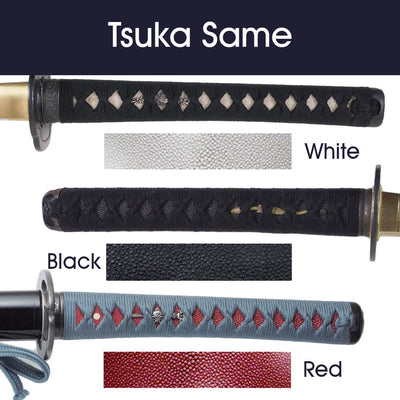
![[MS] Tsuka Same & Maki [MS] Tsuka Same & Maki](http://www.seidoshop.com/cdn/shop/products/Minosaka-TressageSame_200x200_crop_center.progressive.jpg?v=1615961186)
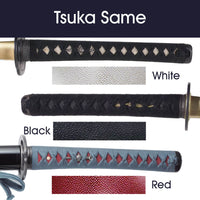
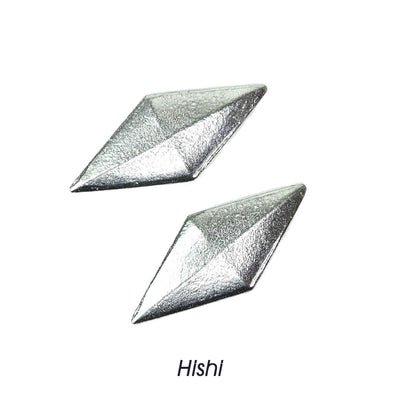
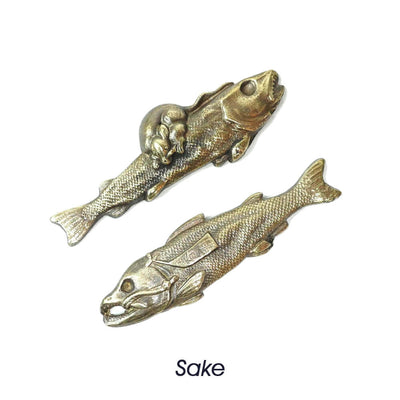
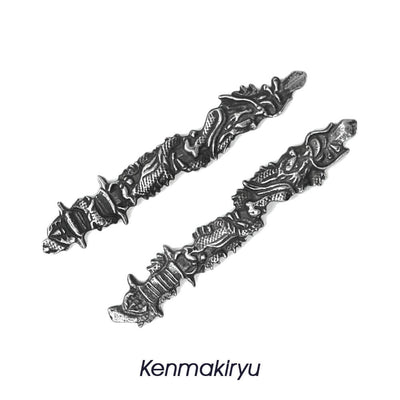
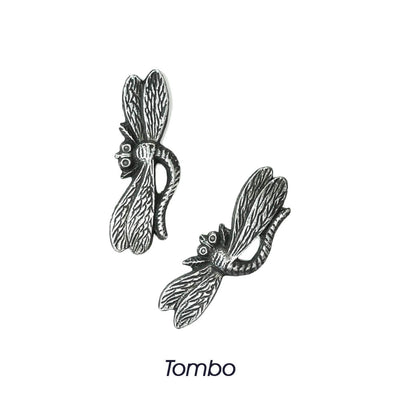
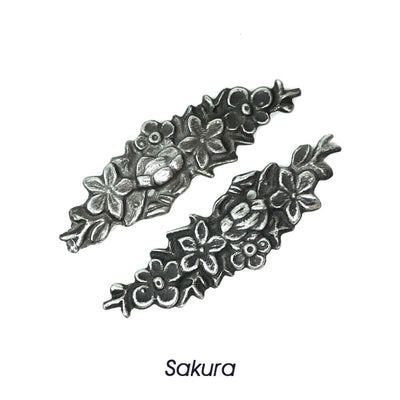
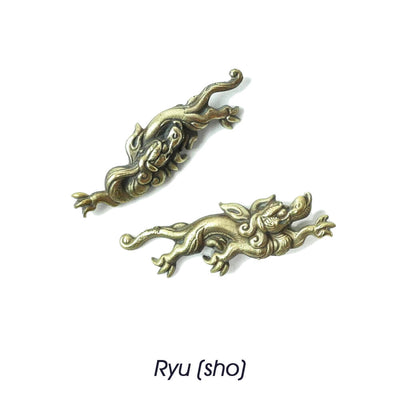
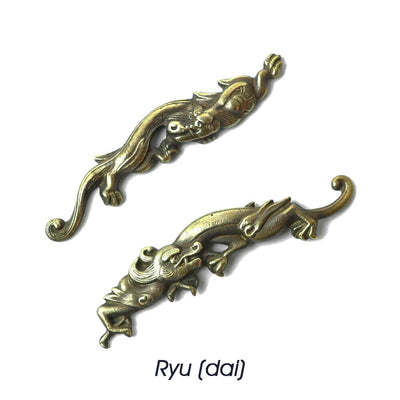
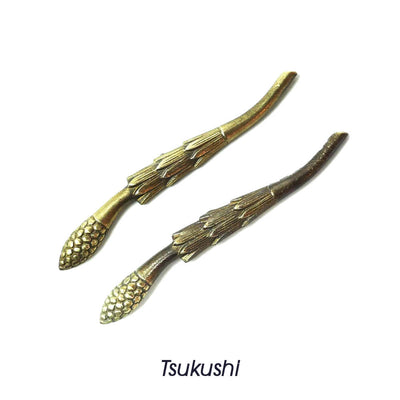
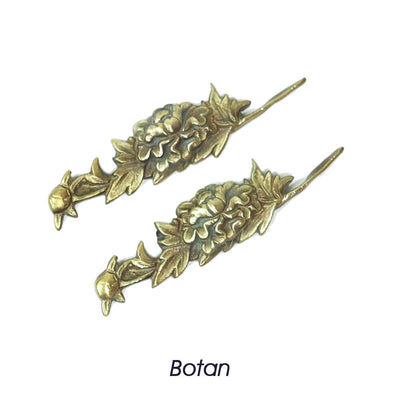
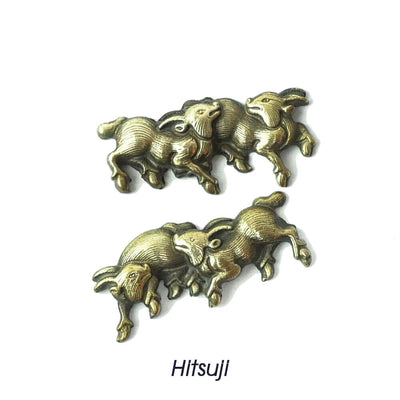
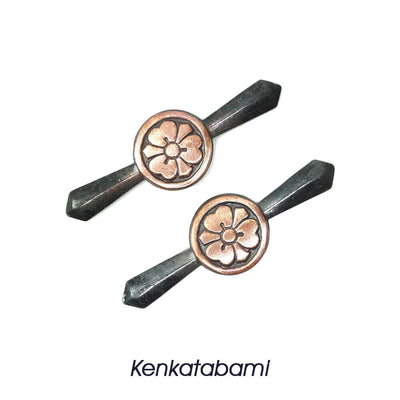
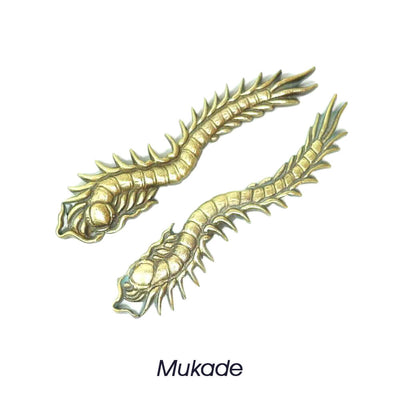
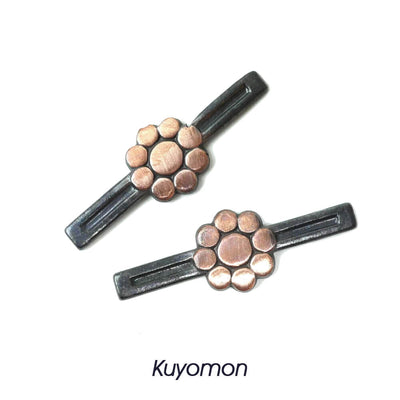
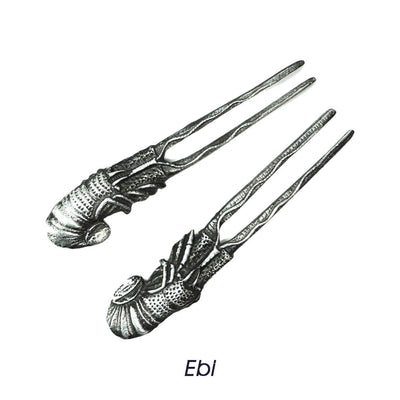
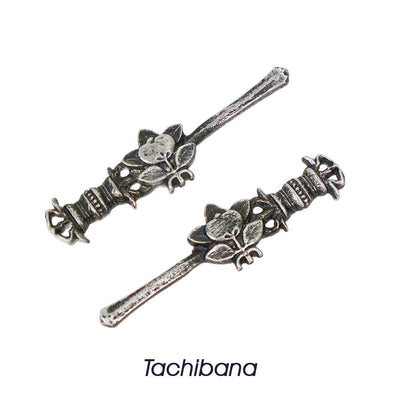
















![Minosaka Saya Kuroro [SY101]](http://www.seidoshop.com/cdn/shop/products/Minosaka-Saya-Kuroro_ccbd6f6e-f4ca-4d90-8886-faf7c98537a9_400x400.progressive.jpg?v=1661386806)
![Minosaka Saya Kuroishime [SY102]](http://www.seidoshop.com/cdn/shop/products/Minosaka-Saya-Kuroishime_ef0e8c41-9404-4bf9-9922-daadc9bc5e74_400x400.progressive.jpg?v=1661386806)
![Minosaka Saya Chaishime [SY103]](http://www.seidoshop.com/cdn/shop/products/Minosaka-Saya-Chaishime_1ab5fb81-c5b6-446e-a06b-d92c0db3c59e_400x400.progressive.jpg?v=1661386806)
![Minosaka Saya Hon Kuroishime [SY200]](http://www.seidoshop.com/cdn/shop/products/Minosaka-Hon-Kuroishime_400x400.progressive.jpg?v=1661386806)
![Minosaka Saya Hon Chaishime [SY201]](http://www.seidoshop.com/cdn/shop/products/Minosaka-Saya-Hon-Chaishime_400x400.progressive.jpg?v=1661386806)
![Minosaka Saya Tsuishu [SY202]](http://www.seidoshop.com/cdn/shop/products/Minosaka_Saya-Tsuishu_400x400.progressive.jpg?v=1661386806)
![Minosaka Saya Kuro Hirumaki [SY203]](http://www.seidoshop.com/cdn/shop/products/Minosaka-Saya-Kuro-Hirumaki_400x400.progressive.jpg?v=1661386806)
![Shu Hirumaki [SY204]](http://www.seidoshop.com/cdn/shop/products/Minosaka-Saya-Shu-Hirumaki_400x400.progressive.jpg?v=1661386806)
![Minosaka Saya Chogai [SY205]](http://www.seidoshop.com/cdn/shop/products/Minosaka-Saya-Chogai_400x400.progressive.jpg?v=1661386806)
![Minosaka Saya Shinobue [SY206]](http://www.seidoshop.com/cdn/shop/products/Minosaka-Saya-Shinobue_400x400.progressive.jpg?v=1661386806)
![Minosaka Saya Inden [SY207]](http://www.seidoshop.com/cdn/shop/products/Minosaka-Saya-Inden_400x400.progressive.jpg?v=1661386806)
![Minosaka Saya Shuro [SY208]](http://www.seidoshop.com/cdn/shop/products/Minosaka-Saya-Shuro_400x400.progressive.jpg?v=1661386806)
![Minosaka Saya Kuroishime / Kuroro [SY211]](http://www.seidoshop.com/cdn/shop/products/Minosaka_Saya-kuroishime-kuroro_400x400.progressive.jpg?v=1661386806)
![Minosaka Saya Wakasa [SY212]](http://www.seidoshop.com/cdn/shop/products/Minosaka_Saya-Wakasa_400x400.progressive.jpg?v=1661386806)
![[MS] Saya Lacquer](http://www.seidoshop.com/cdn/shop/products/Saya-ishimenuri-comparison_24bc56e0-049e-47fb-8998-cc6f0cee8332_400x400.progressive.jpg?v=1661386806)

![Minosaka Saya Kuroro [SY101] Minosaka Saya Kuroro [SY101]](http://www.seidoshop.com/cdn/shop/products/Minosaka-Saya-Kuroro_ccbd6f6e-f4ca-4d90-8886-faf7c98537a9_90x90_crop_center.progressive.jpg?v=1661386806)
![Minosaka Saya Kuroishime [SY102] Minosaka Saya Kuroishime [SY102]](http://www.seidoshop.com/cdn/shop/products/Minosaka-Saya-Kuroishime_ef0e8c41-9404-4bf9-9922-daadc9bc5e74_90x90_crop_center.progressive.jpg?v=1661386806)
![Minosaka Saya Chaishime [SY103] Minosaka Saya Chaishime [SY103]](http://www.seidoshop.com/cdn/shop/products/Minosaka-Saya-Chaishime_1ab5fb81-c5b6-446e-a06b-d92c0db3c59e_90x90_crop_center.progressive.jpg?v=1661386806)
![Minosaka Saya Hon Kuroishime [SY200] Minosaka Saya Hon Kuroishime [SY200]](http://www.seidoshop.com/cdn/shop/products/Minosaka-Hon-Kuroishime_90x90_crop_center.progressive.jpg?v=1661386806)
![Minosaka Saya Hon Chaishime [SY201] Minosaka Saya Hon Chaishime [SY201]](http://www.seidoshop.com/cdn/shop/products/Minosaka-Saya-Hon-Chaishime_90x90_crop_center.progressive.jpg?v=1661386806)
![Minosaka Saya Tsuishu [SY202] Minosaka Saya Tsuishu [SY202]](http://www.seidoshop.com/cdn/shop/products/Minosaka_Saya-Tsuishu_90x90_crop_center.progressive.jpg?v=1661386806)
![Minosaka Saya Kuro Hirumaki [SY203] Minosaka Saya Kuro Hirumaki [SY203]](http://www.seidoshop.com/cdn/shop/products/Minosaka-Saya-Kuro-Hirumaki_90x90_crop_center.progressive.jpg?v=1661386806)
![Shu Hirumaki [SY204] Shu Hirumaki [SY204]](http://www.seidoshop.com/cdn/shop/products/Minosaka-Saya-Shu-Hirumaki_90x90_crop_center.progressive.jpg?v=1661386806)
![Minosaka Saya Chogai [SY205] Minosaka Saya Chogai [SY205]](http://www.seidoshop.com/cdn/shop/products/Minosaka-Saya-Chogai_90x90_crop_center.progressive.jpg?v=1661386806)
![Minosaka Saya Shinobue [SY206] Minosaka Saya Shinobue [SY206]](http://www.seidoshop.com/cdn/shop/products/Minosaka-Saya-Shinobue_90x90_crop_center.progressive.jpg?v=1661386806)
![Minosaka Saya Inden [SY207] Minosaka Saya Inden [SY207]](http://www.seidoshop.com/cdn/shop/products/Minosaka-Saya-Inden_90x90_crop_center.progressive.jpg?v=1661386806)
![Minosaka Saya Shuro [SY208] Minosaka Saya Shuro [SY208]](http://www.seidoshop.com/cdn/shop/products/Minosaka-Saya-Shuro_90x90_crop_center.progressive.jpg?v=1661386806)
![Minosaka Saya Kuroishime / Kuroro [SY211] Minosaka Saya Kuroishime / Kuroro [SY211]](http://www.seidoshop.com/cdn/shop/products/Minosaka_Saya-kuroishime-kuroro_90x90_crop_center.progressive.jpg?v=1661386806)
![Minosaka Saya Wakasa [SY212] Minosaka Saya Wakasa [SY212]](http://www.seidoshop.com/cdn/shop/products/Minosaka_Saya-Wakasa_90x90_crop_center.progressive.jpg?v=1661386806)
![[MS] Saya Lacquer [MS] Saya Lacquer](http://www.seidoshop.com/cdn/shop/products/Saya-ishimenuri-comparison_24bc56e0-049e-47fb-8998-cc6f0cee8332_90x90_crop_center.progressive.jpg?v=1661386806)
![[MS] Sageo](http://www.seidoshop.com/cdn/shop/files/Sageo-minosaka-main-03_400x400.progressive.jpg?v=1690342753)



![Cotton - Black [SG101]](http://www.seidoshop.com/cdn/shop/products/Cotton_Sageo_Shigeuchi_black_400x400.progressive.jpg?v=1690342753)
![Cotton - Navy [SG102]](http://www.seidoshop.com/cdn/shop/products/Cotton_Sageo_Shigeuchi_navy_400x400.progressive.jpg?v=1690342753)
![Cotton - Tetsukon (Blue/Grey) [SG103]](http://www.seidoshop.com/cdn/shop/products/Cotton_Sageo_Shigeuchi_tetsukon_400x400.progressive.jpg?v=1690342753)
![Cotton - Purple [SG104]](http://www.seidoshop.com/cdn/shop/products/Cotton_Sageo_Shigeuchi_purple_400x400.progressive.jpg?v=1690342753)
![Cotton - Brown [SG105]](http://www.seidoshop.com/cdn/shop/products/Cotton_Sageo_Shigeuchi_brown_400x400.progressive.jpg?v=1690342753)
![Cotton - White [SG106]](http://www.seidoshop.com/cdn/shop/products/Cotton_Sageo_Shigeuchi_white_400x400.progressive.jpg?v=1690342753)
![Silk Sageo - Black [SG201]](http://www.seidoshop.com/cdn/shop/files/sageo_silk_shigeuchi_minosaka_black_400x400.progressive.jpg?v=1690342753)
![Silk Sageo - Navy [SG202]](http://www.seidoshop.com/cdn/shop/products/sageo_silk_kakucho_minosaka_navy_400x400.progressive.jpg?v=1690342753)
![Silk Sageo - Tetsukon (Blue/Grey) [SG203]](http://www.seidoshop.com/cdn/shop/products/sageo_silk_kakucho_minosaka_tetsukon_400x400.progressive.jpg?v=1690342753)
![Silk Sageo - Purple [SG204]](http://www.seidoshop.com/cdn/shop/products/sageo_silk_kakucho_minosaka_purple_400x400.progressive.jpg?v=1690342753)
![Silk Sageo - Brown [SG205]](http://www.seidoshop.com/cdn/shop/products/sageo_silk_kakucho_minosaka_brown_96303409-5fcd-40a8-ad2f-9a642bb4d4c6_400x400.progressive.jpg?v=1690342753)
![Silk Sageo - Azuki (Wine) [SG206]](http://www.seidoshop.com/cdn/shop/products/sageo_silk_kakucho_minosaka_azuki_400x400.progressive.jpg?v=1690342753)
![Silk Sageo - Uguisu (Green) [SG207]](http://www.seidoshop.com/cdn/shop/products/sageo_silk_kakucho_minosaka_uguisu_400x400.progressive.jpg?v=1690342753)
![Silk Sageo - Kincha (Gold) [SG208]](http://www.seidoshop.com/cdn/shop/products/sageo_silk_kakucho_minosaka_kincha_400x400.progressive.jpg?v=1690342753)
![Silk Sageo - White [SG209]](http://www.seidoshop.com/cdn/shop/products/sageo_silk_kakucho_minosaka_white_400x400.progressive.jpg?v=1690342753)
![Cotton - Pattern 301: Black & White Diamond [SG301]](http://www.seidoshop.com/cdn/shop/products/sageo-coton-check-pattern-minosaka-301_400x400.progressive.jpg?v=1690342753)
![Cotton - Pattern 302: Brown & White Diamond [SG302]](http://www.seidoshop.com/cdn/shop/products/sageo-coton-check-pattern-minosaka-302_400x400.progressive.jpg?v=1690342753)
![Cotton - Pattern 303: Gold & White Diamond [SG303]](http://www.seidoshop.com/cdn/shop/products/sageo-coton-check-pattern-minosaka-303_400x400.progressive.jpg?v=1690342753)
![Cotton - Pattern 304: Navy & White Diamond [SG304]](http://www.seidoshop.com/cdn/shop/products/sageo-coton-check-pattern-minosaka-304_400x400.progressive.jpg?v=1690342753)
![Cotton - Pattern 305: Red & White Diamond [SG305]](http://www.seidoshop.com/cdn/shop/products/sageo-coton-check-pattern-minosaka-305_400x400.progressive.jpg?v=1690342753)
![Cotton - Pattern 306: Red & Black Diamond [SG306]](http://www.seidoshop.com/cdn/shop/products/sageo-coton-check-pattern-minosaka-306_400x400.progressive.jpg?v=1690342753)
![Cotton - Pattern 307: Brown & Gold Diamond [SG307]](http://www.seidoshop.com/cdn/shop/products/sageo-coton-check-pattern-minosaka-307_400x400.progressive.jpg?v=1690342753)
![Cotton - Pattern 308: Navy & Gold Diamond [SG308]](http://www.seidoshop.com/cdn/shop/products/sageo-coton-check-pattern-minosaka-308_400x400.progressive.jpg?v=1690342753)
![Cotton - Pattern 311: Black & White Check [SG311]](http://www.seidoshop.com/cdn/shop/products/sageo-coton-check-pattern-minosaka-311_400x400.progressive.jpg?v=1690342753)
![Cotton - Pattern 312: Brown & White Check [SG312]](http://www.seidoshop.com/cdn/shop/products/sageo-coton-check-pattern-minosaka-312_400x400.progressive.jpg?v=1690342753)
![Cotton - Pattern 313: Gold & White Check [SG313]](http://www.seidoshop.com/cdn/shop/products/sageo-coton-check-pattern-minosaka-313_400x400.progressive.jpg?v=1690342753)
![Cotton - Pattern 314: Navy & White Check [SG314]](http://www.seidoshop.com/cdn/shop/products/sageo-coton-check-pattern-minosaka-314_400x400.progressive.jpg?v=1690342753)
![Cotton - Pattern 315: Red & White Check [SG315]](http://www.seidoshop.com/cdn/shop/products/sageo-coton-check-pattern-minosaka-315_400x400.progressive.jpg?v=1690342753)
![Cotton - Pattern 316: Black & Red Check [SG316]](http://www.seidoshop.com/cdn/shop/products/sageo-coton-check-pattern-minosaka-316_400x400.progressive.jpg?v=1690342753)
![Cotton - Pattern 320: Red, White & Black Check [SG320]](http://www.seidoshop.com/cdn/shop/products/sageo-coton-check-pattern-minosaka-320_400x400.progressive.jpg?v=1690342753)
![[MS] Sageo [MS] Sageo](http://www.seidoshop.com/cdn/shop/files/Sageo-minosaka-main-03_90x90_crop_center.progressive.jpg?v=1690342753)



![Cotton - Black [SG101] Cotton - Black [SG101]](http://www.seidoshop.com/cdn/shop/products/Cotton_Sageo_Shigeuchi_black_90x90_crop_center.progressive.jpg?v=1690342753)
![Cotton - Navy [SG102] Cotton - Navy [SG102]](http://www.seidoshop.com/cdn/shop/products/Cotton_Sageo_Shigeuchi_navy_90x90_crop_center.progressive.jpg?v=1690342753)
![Cotton - Tetsukon (Blue/Grey) [SG103] Cotton - Tetsukon (Blue/Grey) [SG103]](http://www.seidoshop.com/cdn/shop/products/Cotton_Sageo_Shigeuchi_tetsukon_90x90_crop_center.progressive.jpg?v=1690342753)
![Cotton - Purple [SG104] Cotton - Purple [SG104]](http://www.seidoshop.com/cdn/shop/products/Cotton_Sageo_Shigeuchi_purple_90x90_crop_center.progressive.jpg?v=1690342753)
![Cotton - Brown [SG105] Cotton - Brown [SG105]](http://www.seidoshop.com/cdn/shop/products/Cotton_Sageo_Shigeuchi_brown_90x90_crop_center.progressive.jpg?v=1690342753)
![Cotton - White [SG106] Cotton - White [SG106]](http://www.seidoshop.com/cdn/shop/products/Cotton_Sageo_Shigeuchi_white_90x90_crop_center.progressive.jpg?v=1690342753)
![Silk Sageo - Black [SG201] Silk Sageo - Black [SG201]](http://www.seidoshop.com/cdn/shop/files/sageo_silk_shigeuchi_minosaka_black_90x90_crop_center.progressive.jpg?v=1690342753)
![Silk Sageo - Navy [SG202] Silk Sageo - Navy [SG202]](http://www.seidoshop.com/cdn/shop/products/sageo_silk_kakucho_minosaka_navy_90x90_crop_center.progressive.jpg?v=1690342753)
![Silk Sageo - Tetsukon (Blue/Grey) [SG203] Silk Sageo - Tetsukon (Blue/Grey) [SG203]](http://www.seidoshop.com/cdn/shop/products/sageo_silk_kakucho_minosaka_tetsukon_90x90_crop_center.progressive.jpg?v=1690342753)
![Silk Sageo - Purple [SG204] Silk Sageo - Purple [SG204]](http://www.seidoshop.com/cdn/shop/products/sageo_silk_kakucho_minosaka_purple_90x90_crop_center.progressive.jpg?v=1690342753)
![Silk Sageo - Brown [SG205] Silk Sageo - Brown [SG205]](http://www.seidoshop.com/cdn/shop/products/sageo_silk_kakucho_minosaka_brown_96303409-5fcd-40a8-ad2f-9a642bb4d4c6_90x90_crop_center.progressive.jpg?v=1690342753)
![Silk Sageo - Azuki (Wine) [SG206] Silk Sageo - Azuki (Wine) [SG206]](http://www.seidoshop.com/cdn/shop/products/sageo_silk_kakucho_minosaka_azuki_90x90_crop_center.progressive.jpg?v=1690342753)
![Silk Sageo - Uguisu (Green) [SG207] Silk Sageo - Uguisu (Green) [SG207]](http://www.seidoshop.com/cdn/shop/products/sageo_silk_kakucho_minosaka_uguisu_90x90_crop_center.progressive.jpg?v=1690342753)
![Silk Sageo - Kincha (Gold) [SG208] Silk Sageo - Kincha (Gold) [SG208]](http://www.seidoshop.com/cdn/shop/products/sageo_silk_kakucho_minosaka_kincha_90x90_crop_center.progressive.jpg?v=1690342753)
![Silk Sageo - White [SG209] Silk Sageo - White [SG209]](http://www.seidoshop.com/cdn/shop/products/sageo_silk_kakucho_minosaka_white_90x90_crop_center.progressive.jpg?v=1690342753)
![Cotton - Pattern 301: Black & White Diamond [SG301] Cotton - Pattern 301: Black & White Diamond [SG301]](http://www.seidoshop.com/cdn/shop/products/sageo-coton-check-pattern-minosaka-301_90x90_crop_center.progressive.jpg?v=1690342753)
![Cotton - Pattern 302: Brown & White Diamond [SG302] Cotton - Pattern 302: Brown & White Diamond [SG302]](http://www.seidoshop.com/cdn/shop/products/sageo-coton-check-pattern-minosaka-302_90x90_crop_center.progressive.jpg?v=1690342753)
![Cotton - Pattern 303: Gold & White Diamond [SG303] Cotton - Pattern 303: Gold & White Diamond [SG303]](http://www.seidoshop.com/cdn/shop/products/sageo-coton-check-pattern-minosaka-303_90x90_crop_center.progressive.jpg?v=1690342753)
![Cotton - Pattern 304: Navy & White Diamond [SG304] Cotton - Pattern 304: Navy & White Diamond [SG304]](http://www.seidoshop.com/cdn/shop/products/sageo-coton-check-pattern-minosaka-304_90x90_crop_center.progressive.jpg?v=1690342753)
![Cotton - Pattern 305: Red & White Diamond [SG305] Cotton - Pattern 305: Red & White Diamond [SG305]](http://www.seidoshop.com/cdn/shop/products/sageo-coton-check-pattern-minosaka-305_90x90_crop_center.progressive.jpg?v=1690342753)
![Cotton - Pattern 306: Red & Black Diamond [SG306] Cotton - Pattern 306: Red & Black Diamond [SG306]](http://www.seidoshop.com/cdn/shop/products/sageo-coton-check-pattern-minosaka-306_90x90_crop_center.progressive.jpg?v=1690342753)
![Cotton - Pattern 307: Brown & Gold Diamond [SG307] Cotton - Pattern 307: Brown & Gold Diamond [SG307]](http://www.seidoshop.com/cdn/shop/products/sageo-coton-check-pattern-minosaka-307_90x90_crop_center.progressive.jpg?v=1690342753)
![Cotton - Pattern 308: Navy & Gold Diamond [SG308] Cotton - Pattern 308: Navy & Gold Diamond [SG308]](http://www.seidoshop.com/cdn/shop/products/sageo-coton-check-pattern-minosaka-308_90x90_crop_center.progressive.jpg?v=1690342753)
![Cotton - Pattern 311: Black & White Check [SG311] Cotton - Pattern 311: Black & White Check [SG311]](http://www.seidoshop.com/cdn/shop/products/sageo-coton-check-pattern-minosaka-311_90x90_crop_center.progressive.jpg?v=1690342753)
![Cotton - Pattern 312: Brown & White Check [SG312] Cotton - Pattern 312: Brown & White Check [SG312]](http://www.seidoshop.com/cdn/shop/products/sageo-coton-check-pattern-minosaka-312_90x90_crop_center.progressive.jpg?v=1690342753)
![Cotton - Pattern 313: Gold & White Check [SG313] Cotton - Pattern 313: Gold & White Check [SG313]](http://www.seidoshop.com/cdn/shop/products/sageo-coton-check-pattern-minosaka-313_90x90_crop_center.progressive.jpg?v=1690342753)
![Cotton - Pattern 314: Navy & White Check [SG314] Cotton - Pattern 314: Navy & White Check [SG314]](http://www.seidoshop.com/cdn/shop/products/sageo-coton-check-pattern-minosaka-314_90x90_crop_center.progressive.jpg?v=1690342753)
![Cotton - Pattern 315: Red & White Check [SG315] Cotton - Pattern 315: Red & White Check [SG315]](http://www.seidoshop.com/cdn/shop/products/sageo-coton-check-pattern-minosaka-315_90x90_crop_center.progressive.jpg?v=1690342753)
![Cotton - Pattern 316: Black & Red Check [SG316] Cotton - Pattern 316: Black & Red Check [SG316]](http://www.seidoshop.com/cdn/shop/products/sageo-coton-check-pattern-minosaka-316_90x90_crop_center.progressive.jpg?v=1690342753)
![Cotton - Pattern 320: Red, White & Black Check [SG320] Cotton - Pattern 320: Red, White & Black Check [SG320]](http://www.seidoshop.com/cdn/shop/products/sageo-coton-check-pattern-minosaka-320_90x90_crop_center.progressive.jpg?v=1690342753)

